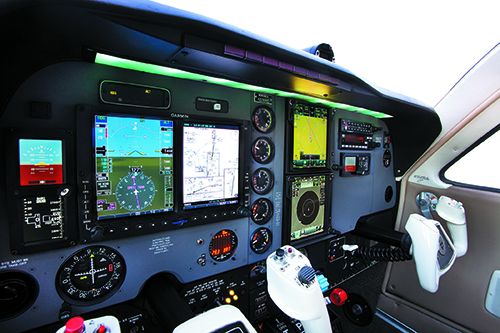So many buyers are removing their vacuum system in favor of all-electronic instruments, but neglected electrical systems—including the battery—are the weak link. Reliability isn’t helped when the typical lead-acid model sits for long periods in harsh temperatures.
Meanwhile, battery tech for the consumer electronics market has changed for the better, and that includes smart lithium-ion cells with better tolerance for demanding electrical loads and temperature extremes. So what about smart batteries for aircraft? Two companies—Mid-Continent Instrument’s True Blue Power division, and EarthX—have been leading the charge with models for limited applications. Let’s take a close look.
MANY PROS, SOME CONS
Lithium-ion and lithium iron phosphate cells seem we’ll suited for small airplanes. Consider that these cells are roughly 80 percent lighter than lead acid and nickel cadmium cells, have a 4000-charge cycle life (versus 350 for a typical lead acid battery), will not corrode or sulfate, can’t freeze or boil, plus they can be mounted in any position other than inverted. They have a low self-discharge rate (which means they can hold a charge during long winter storage) a wider operating temperature range, sustain higher starting voltage while the engine is cranking (ideal for hot and cold starts) and their discharge voltage is constant. But they deliver a steep drop-off at total discharge, which isn’t good. To contrast, conventional batteries are good at dying slowly, giving you enough time to get on the ground before you’ve lost the last bit of power.
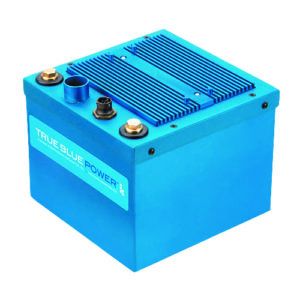
Last, applications are limited by regulatory approval and the buy-in for current STC’d models only makes sense for high-end aircraft.
TRUE BLUE POWER
Mid-Continent Instruments and Avionics, through its True Blue Power division, has been working on smart-battery tech for the better part of 10 years and holds both TSO and STC certification for its TB-series NanoPhosphate Lithium-ion batteries. The STC list partially includes Beech Bonanza and King Air models, Robinson R44 helicopters and Pilatus PC-12 turboprops.

True Blue worked to make the batteries safer for the aircraft environment because thermal runaway is a major concern with lithium-ion batteries. Search YouTube videos showing the catastrophic failure of a consumer-grade battery in a smartphone and you’ll see what we mean. The NanoPhosphate cell chemistry used by True Blue Power is said to be significantly more stable and less reactive than other chemistries. In the event of an internal short circuit to a cell (or thermal runaway) in a True Blue Power battery, the electrolyte vapor is directed outside the aircraft and away from cabin occupants and critical components. The company says its lithium-ion batteries are tested to withstand a scenario in which all redundant levels of protection are disabled and over-current/overcharge is applied. In that case the battery is proven to deliver 100 percent containment and reach a max temperature of 204 degrees C—something that’s proved during the rigors of TSO testing.
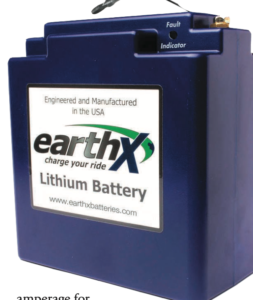
True Blue Power has a number of batteries in different sizes and aircraft accessories amperage for limited piston and turbine aircraft. The TB17 is a 17 amp-hour battery (nominal at 23 degrees C), weighs 16 pounds, requires about 30 minutes (at 34 amps) for a complete recharge when fully discharged and will work in extreme temperatures (-40 to 158 degrees F). It’s a smart battery designed to protect against overcharge, over-discharge, over-current, short circuit, over-temperature, under-temperature and has charge current limiting protection. It also delivers higher voltages during engine start.
Integrated in the battery is a switchboard for enabling and disabling charging or discharging, depending on cell health. It also has charge-limiting and current-monitoring functions. In addition to the switch board there’s a control board, which is the heart of the Battery Management System or BMS. This discrete logic circuitry monitors the battery functions and protects against short circuit, over-temperature and over-discharge. The control board also generates the battery status signals for output through the 7-pin interface connector for cockpit monitoring and heater control via Mid-Continent’s MD41 annunciator control unit, or ACU. It displays fault, temperature, charging and heating status, and a push-button switch turns the heater on and off.
The TB17 produces no emissions unless there’s a failure. But the TB17 still requires venting to ensure that any gaseous emissions are vented overboard, and it’s up to the installer to install the vent where emitted gases would not be directed toward any of the aircraft’s cabin air intake points.
With its internal, self-powered heater circuit, the TB17 operates at extremely low temps (-40 degrees F) and is designed to support an engine start down to approximately 23 degrees F. Below this temperature, the performance of the battery begins to decrease in current and energy delivery as the electrolyte in the cells begins to thicken and the internal impedance increases to retard ion flow. In order to address this, each battery module contains an individual heater that is powered by the cells themselves, even at low temperatures.
When enabled, the cell heater automatically turns on (including during flight) when the temperature of the battery is below 50 degrees F and turns off when it reaches 59 degrees F. The unit will continue to monitor its temperature and turn the heater on again as needed any time the temperature drops below the threshold.
The estimated life for the TB17 battery is eight years, it has a two-year warranty and it has reliably demonstrated over 20,000 engine starts and subsequent charge cycles. The cells themselves are designed for a useful life of up to 10 years. The price? $6594, not including the $1110 MD41-1817 ACU.
Worth mentioning is that True Blue Power also offers its Gen5 series larger smart batteries, which include the TB20, TB30 and TB40 batteries (20, 30 and 40 amp-hour ratings) and these are proof that True Blue’s tech has been maturing over the past 10 years with better onboard electronics for providing proactive data, alerting and command-control operations of the battery cells. With USB connectivity, data can be retrieved from the battery by plugging in a USB data stick. Added benefits of the TSO-certified Gen5 batteries include wider operating temperatures (than even lead acid or nickel cadmium), more power per battery weight, more engine starts per charge, plus automated built-in preheaters for controlling battery temperature. They also have data integration and control through an annunciator panel. They have on-condition maintenance and an extended service life of eight years, on average, before replacement.
But all that tech—and rigors of FAA certification—come at an astonishingly high price. The 46 amp-hour TB44 used on the Pilatus PC-12 turboprop single is $17,404. Contact www.truebluepowerusa.com.
EARTHX BATTERIES
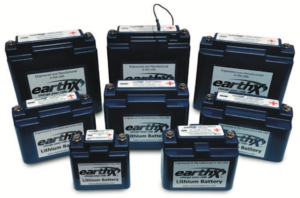
Colorado-based EarthX Batteries was founded in 2009 and its batteries are focused on applications where weight savings are critical. We’re talking about powersports and racing, but its non-certified batteries have been popular in the experimental aircraft market, and included by some OEMs.
EarthX batteries are based upon lithium iron phosphate chemistry, or LFP. LFP has gained market acceptance due to its low cost, non-toxicity, natural abundance of iron, excellent thermal stability, safety characteristics and electrochemical performance. Its use as a battery electrode was first described in published literature by Akshaya Padhi and coworkers of John B. Goodenough’s research group at the University of Texas in 1996. Then, researchers at MIT introduced a new coating, called the Beltway Battery, which allows the ions to move more easily within the battery. The MIT scientists discovered that by coating lithium iron phosphate particles in a glassy material called lithium pyrophosphate, ions bypass the channels and move faster than in other batteries.
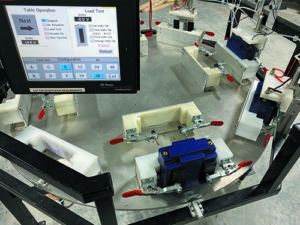
EarthX began manufacturing its batteries in 2011 and designed an aircraft-specific battery in 2013. The company began the FAA certification process in 2017, receiving the first ever issued FAA TSO-C179a in April 2019 for a 12-volt LFP battery system, the model ETX900-TSO.
The installation guidelines stipulate that the aircraft must have a battery fault monitoring indicator installed (via an annunciator light or displayed on an EFIS), the battery must be vented, the electrical system must have a maximum charge rating of 80 amps and the battery must be replaced after six years in service. The maximum voltage output from the aircraft’s charging system shall not exceed 16 volts for greater than 100 msec. An automatic over-voltage protection device (OVPD) is required on the aircraft charging system.
The ETX900-TSO weighs 5.4 pounds (compare it with a Gill G35 weighing 27 pounds), measures 6.5 by 3.1 by 6.6 inches, and has a 15.6 Ah capacity, an operating temperature of -30 to +60 degrees C and a self-discharge rate less than 3 percent per month.
The cells used in EarthX batteries are made in China to EarthX specs and are stored for three months before being assembled at the company’s Colorado plant. This allows each cell to mature, while ensuring there are no defects (the defect rate is 0.2 percent, according to EarthX) before being placed in service.
Each ETX900-TSO battery has two 8-cell packs and a Battery Management System (BMS). The BMS is built in-house, using surface-mount electronics. The BMS circuit board conducts a startup and self-diagnostic check when it is attached to the battery cells. This test takes one hour, ensuring that each cell’s voltage matches the other cells in the battery. After final assembly, the battery goes through an eight-step testing and quality assurance process. Each battery is provided with a unique serial number, with manufacturing and testing data stored for 10 years—an FAA requirement.
The EarthX batteries do have over-discharge (a complete drain) protection, excessive cranking protection, high-temperature protection and short-circuit protection. It also balances the charge between each cell and can alert for low voltages or high voltages (above 15.2 volts). Think of the BMS as backup to the aircraft’s voltage regulator and over-voltage protection. There’s a lot at stake.
As an example, the charging system on a Lycoming IO-360 has the ability to generate more than 100 volts (based upon a defective voltage regulator and over-voltage protection device). With greater than 100 volts feeding the battery, and if the battery’s over-voltage protection failed, then a thermal runaway could be triggered. See the sidebar above for more on BMS circuitry.
For further protection, EarthX designed a thermal battery box that’s designed to protect a battery from heat in the engine bay after shutdown and from radiant heat during flight. The battery box is stainless steel with a mirror finish and has a high-performance insulating foam layer between the box and battery to reduce the effect of convection heat. There is a hold-down tab with a mounting fixture that can hold up to 1-inch-diameter cooling air ducts. The battery box was engineered to be strong enough to withstand 30 G’s and is compatible with EarthX’s existing E-case battery models—which are the ETX680/900/1200.
EarthX has a variety of battery sizes and weights. The ETX900-TSO battery is for replacing 25 or 35 Ah lead acid batteries. The good news: EarthX is working toward FAA (and Transport Canada) certification for installation of its batteries in certified aircraft, beginning with the Cessna 182 series, which house the battery outside of the engine bay. Separate approval will be required for models that have batteries housed in the engine bay. EarthX is hoping for certification sometime in 2020.
Until then the only way to legally support an installation in a certified aircraft is through an FAA field approval. In Canada the field approval process will require engaging a TC design approval representative. Still, the price looks promising.
EarthX is offering the ETX900-TSO at a pre-STC price of $699, and the expected retail price for the certified version is currently $899. For international aircraft (non U.S. registered), EarthX uses a third party to provide an FAA Form 8130-3 for an additional $150. EarthX also sells battery chargers, vent tubing and LED panel annunciators direct and through Aircraft Spruce. Contact www.earthxbatteries.com.
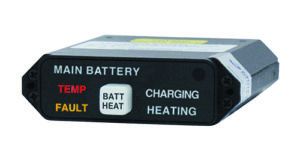
Talk about lithium-ion smart-battery technology for aircraft and inevitably the discussion will turn to safety—as in, what happens if the thing goes into thermal runaway, like that string of smoked smartphones that made the news a couple of years ago. That’s why BMS, for Battery Management System, is a key element to smart aircraft batteries. True Blue Power and EarthX batteries have sizable protection built in, including the ability to monitor the battery’s health status on the fly.
For instance the EarthX ETX900-TSO has a serial communications output (a black wire on the outside of the battery) for interfacing with an EFIS or a panel-mounted annunciator light, and is designed to monitor and alert that something is outside of normal parameters. Same with True Blue Power. That’s the MD41 annunciator control unit (pictured right) used with TB-series smart batteries. The BMS in True Blue Power batteries stores health data, which is accessed with an external drive.
The EarthX batteries don’t log or store data, but do have over-discharge (a complete drain), excessive cranking, high-temperature and short-circuit protection. They also balance the charge between each cell and can alert for low voltages or high voltages (above 15.2 volts). That’s a good thing—an over-voltage smoke show is not. Without a failsafe, the battery’s cells would vent and the aircraft’s electronics will likely be damaged beyond repair from a voltage spike. Think of the BMS as backup protection to the aircraft’s voltage regulator, over-voltage protection device and charging system fault indicators.
As a last line of defense the EarthX and True Blue batteries have a thermal runaway containment system to safely vent vapor and smoke to the outside of the aircraft. It’s rare, but the EarthX battery’s chemistry could enter a thermal runaway condition, however, as the battery heats up and the iron phosphate chemistry starves the combustion process of oxygen. This results in the creation of fumes, which are vented overboard, but in theory there wouldn’t be a fire.
A MARKET TO WATCH
We’re impressed with True Blue Power’s batteries, but they’re limited to 28-volt electrical systems and are high priced for lower-end GA pistons.
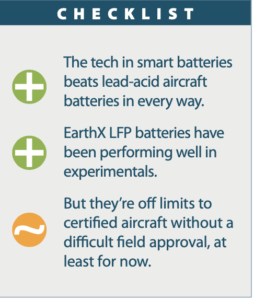
Concorde Aircraft Batteries has been developing a series of lithium-ion batteries with lithium iron phosphate cathode material, but says the batteries won’t be retrofittable due to the integrated BMS and required external monitoring. It says the cost of the battery will be up to six times higher than an equivalent size lead-acid battery (plus high shipping costs), a premium “which is hard to justify with regards to replacement batteries.” It’s holding short for now.
We agree, but if EarthX certifies its ETX series models and prices them sub-$1000—a price we feel is palatable—it could be a compelling upgrade for a lot of buyers.

